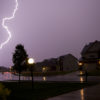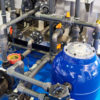When it comes to pool heaters, size isn’t just a matter of comfort — it’s a major factor in your system’s efficiency, cost, and longevity. Many pool owners overlook the importance of pool heat pump sizing, but getting it right can significantly reduce energy bills while maintaining ideal water temperatures. Choosing a unit that’s too small or too large can lead to poor performance, increased wear, and unnecessary expenses. Proper sizing ensures optimal heating, extended equipment life, and a better overall pool experience.
Factors Influencing Pool Heat Pump Sizing
Selecting the right size for your pool heaters involves more than just estimating water volume. Several environmental and usage factors significantly affect performance and efficiency:
- Climate: Warmer regions require less energy to maintain temperature, while cooler climates need more powerful heating systems.
- Pool Size and Exposure: Larger pools or those exposed to high wind or minimal sun will lose heat faster, requiring a stronger unit.
- Usage Patterns: Frequent use, especially during cooler months, increases heating demands.
- Desired Water Temperature: Higher preferred temps require a larger system to maintain consistency.
- Insulation and Covers: Pools with thermal covers and proper insulation retain heat better, allowing for a more moderate pump size.
Step-by-Step Guide to Pool Heat Pump Sizing
Accurate pool heater sizing begins with understanding your pool’s thermal load — the amount of energy required to raise and maintain water temperature. Start by calculating your pool’s surface area (length × width), then estimate the BTUs (British Thermal Units) needed using the formula:
BTUs = Pool Surface Area × Temperature Rise × 12
This basic calculation gives a general idea, but other factors — such as wind exposure and cover usage — must be accounted for. To simplify the process, homeowners can use reputable online tools like the Department of Energy’s Pool Energy Calculator or manufacturer-provided sizing charts.
Professionals often use software that adjusts for regional climate, usage frequency, and insulation. Whether DIY or with expert help, using the right tools helps you choose the right size heat pump, avoiding costly oversizing or underperformance in your heating system.
Common Mistakes in Pool Heat Pump Sizing
Improper sizing is one of the most common pitfalls for pool owners investing in pool heaters. A frequent mistake is focusing solely on pool volume while ignoring crucial external factors like climate and usage patterns. Failing to consider your local weather — whether it’s dry and hot or cool and breezy — can result in an underpowered system that struggles to maintain temperature or an oversized unit that wastes energy and money.
Another overlooked factor is insulation. Not using a pool cover or underestimating heat loss through evaporation can skew calculations, leading to the wrong pool heater size. This not only compromises comfort but also shortens equipment lifespan due to overuse or inefficiency.
Maximizing Pool Heat Pump Efficiency
A properly sized unit is only part of the equation — maintaining peak efficiency requires smart use and consistent upkeep.
Use pool covers to retain heat
One of the simplest and most effective ways to reduce energy consumption is by using a pool cover. Covers minimize heat loss caused by evaporation and keep debris out, reducing strain on the pump. This allows your pool heaters to maintain temperature more easily, especially overnight or during windy days.
Prioritize routine maintenance
Like any mechanical system, pool heat pumps perform best with regular maintenance. Cleaning filters, inspecting electrical components, and checking refrigerant levels should be part of a seasonal routine. This not only sustains efficiency but also extends the unit’s life.
Efficient operation starts with proper sizing but continues with smart ownership habits — saving you money and maximizing comfort across the swimming season.
Right-Sized, Right Results
Choosing the correct size of pool heater is one of the most impactful decisions you can make for energy efficiency, comfort, and sustainability. Accurate pool heater sizing ensures your system runs efficiently, reduces waste, and supports eco-friendly pool ownership. Whether you’re a homeowner or contractor, the next step after sizing is selecting a reliable model, ensuring professional installation, and committing to consistent maintenance. By focusing on precision from the start, you’ll extend equipment life, cut utility costs, and enjoy warm, inviting water throughout the swimming season.



